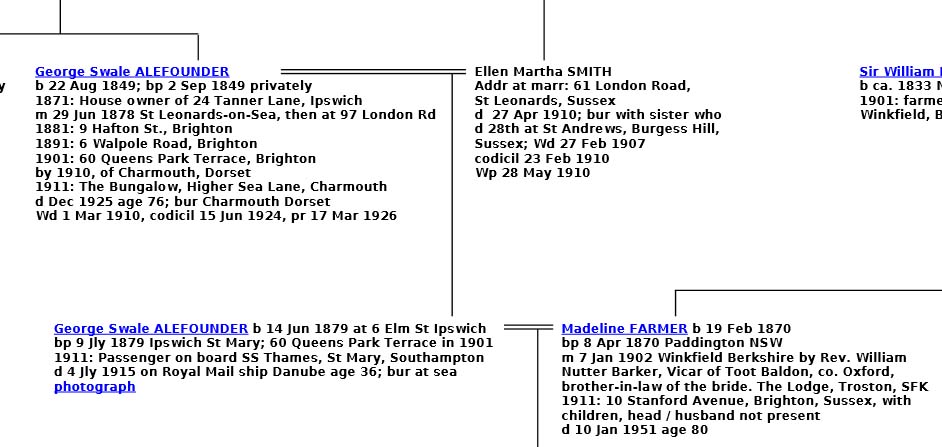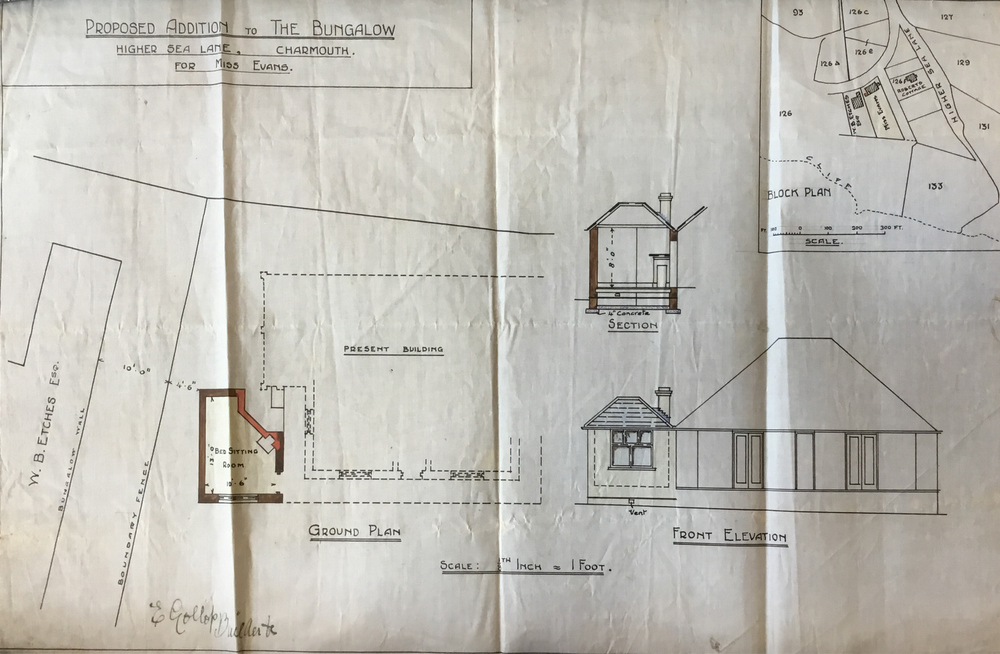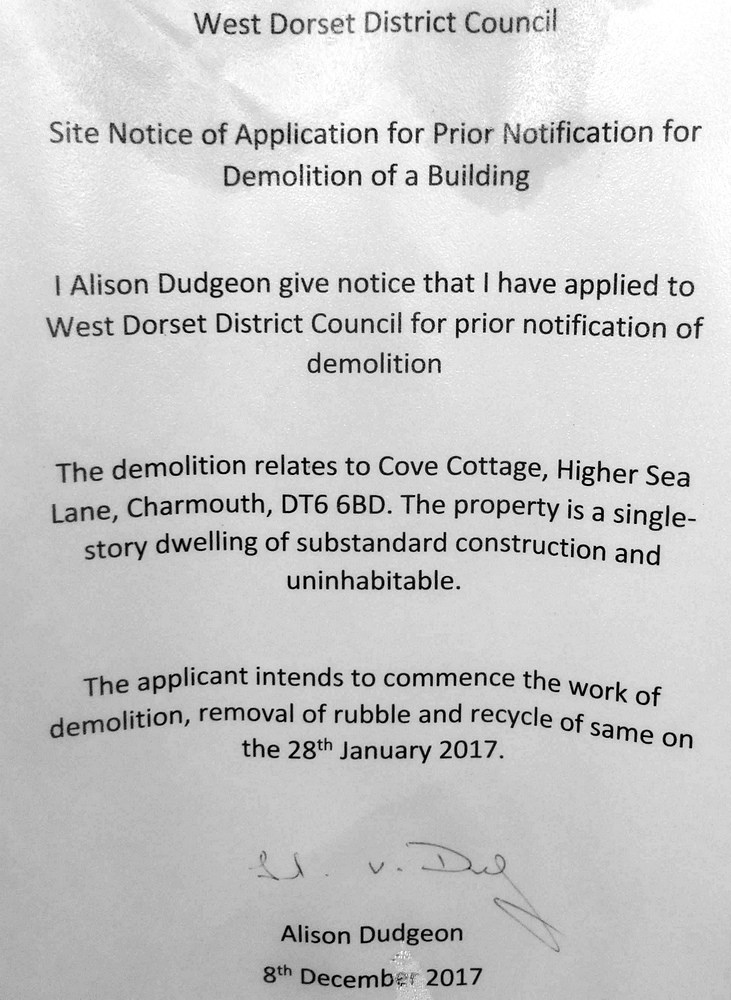Click on images or Charmouth Home to return back.

A number of early postcards exist showing Cove Cottage from when it was built in 1906. At that time, It was only the fifth property to have been built in Higher Sea Lane. The oldest was Sea Horse House (Gresham House) in 1801, now demolished. Then Victoria Cottage, The Cottage, Lavender
Cottage and Roberts Cottage were built after their plots were auctioned off by the Lord of The
Manor, Charles Coulton. He was a Solicitor, living in Kings Lynn who had bought the Manor and
intended creating an Estate along Higher Sea Lane. He subdivided the lands and it was sold off in
two auctions in 1898 and 1904. Those unsold parcels of land were sold off later by him or Douglas
Pass who bought the balance.
We have George Swale Alefounder to thank for purchasing the plot from Coulton and building
what became known as "The Bungalow" and later named “Cove Cottage”. He originated from
Ipswich, from a wealthy land owning family in the Town. Born in 1849, he lived and worked there
until he married Ellen Martha Smith in 1878 and they moved to Brighton. The census's always
show him as of "Independent Means" and it would seem that his income derived from a number of
houses that he owned in both Ipswich and Brighton. He was also a Director of the Kangarilla Silver
Mines In Australia and of Alefounder & King, Mechanical Engineers. The National Archives has
details of this latter company which records him living in 1906 at "The Bungalow" Charmouth, the
year it was built. By this time, he was a widower and the 1911 Census has him aged 62 on his
own living off “private means”. A search of the Electoral Rolls for Charmouth show that by 1922 a
Miss Gertrude Evans was also living there. But in 1926 she had built a large house known as “Hammonds Mead” not far from his, where she was to live until after the Second World War. When
she died, she gave the field to the south and another on the other side of the river to the village,
never to be built on. The house was to become a hotel and was later demolished and several
houses built on the site.
I interviewed 93-year-old Derrick Warren a couple of years before he died and he told me that he
remembered Mr, Alefounder well as he never wore clothes on the beach and his aunt used to say" It's only Alefounder, he'll use his newspaper! " When he died in Charmouth in 1926, “The
Bungalow” was bought by Theodore Charles Fugard, who lived on his own, but is shown as
moving to the Lears in Charmouth in 1933. Miss Alice Amelia Kelly is the next owner who was
there until the War, after which it is bought by Herbert Charles Dibben. Subsequent owners for
those interested can be found in the Electoral Rolls for the village which are held at the Record
Office in Dorchester.
A vivid realisation of what the village has lost in the demolition of this property is vividly seen in the
postcard shown here, dated August 13th 1907 of a view from the side of the “Lookout” towards
Higher Sea Lane. “The Bungalow” can be seen behind the Coastguard with his telescope with its
distinctive windows set into the roof. To the right is The Sanctuary. In the foreground, just behind
the old chap leaning against a gate is the Battery for ammunition used by the Coastguards. It
would seem that they would practice using their gun by firing a shell out to sea and then retrieving
it when the sea went out and reusing it. I have only touched the surface of the history of this
property and would be grateful for further information to add to my website.

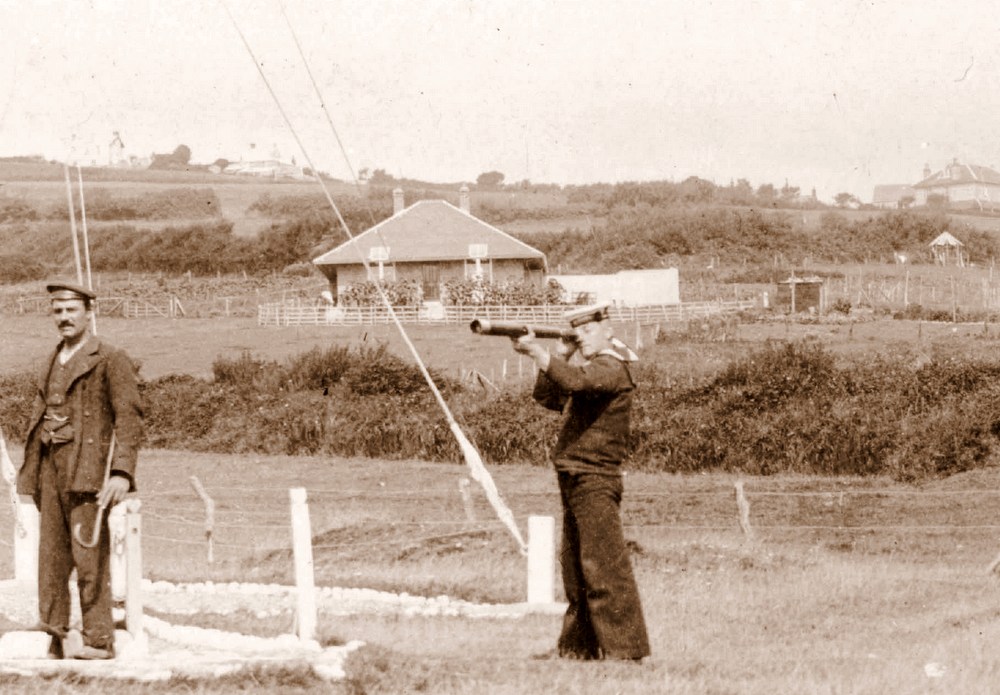
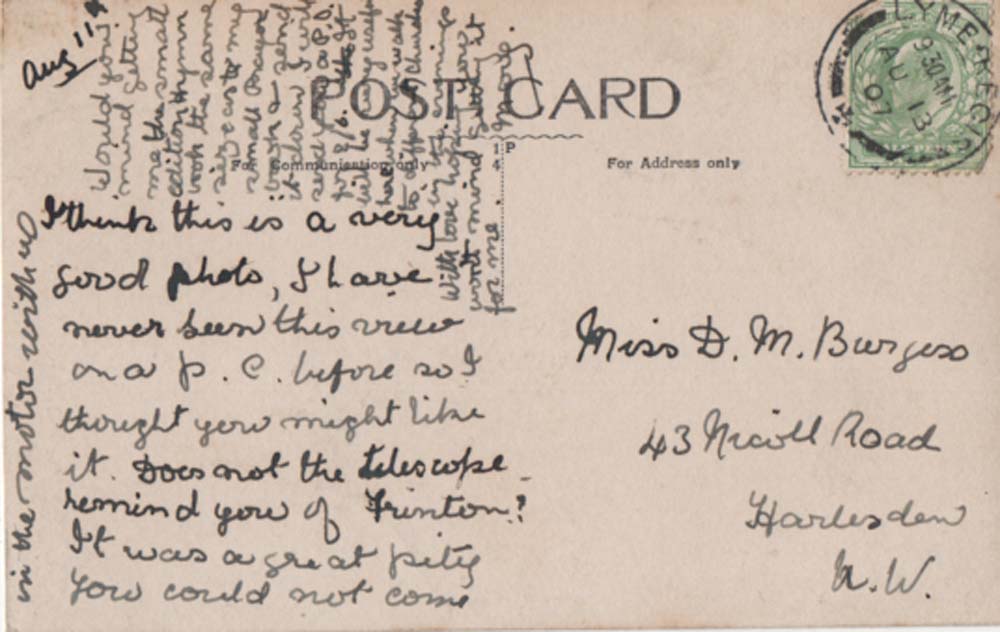
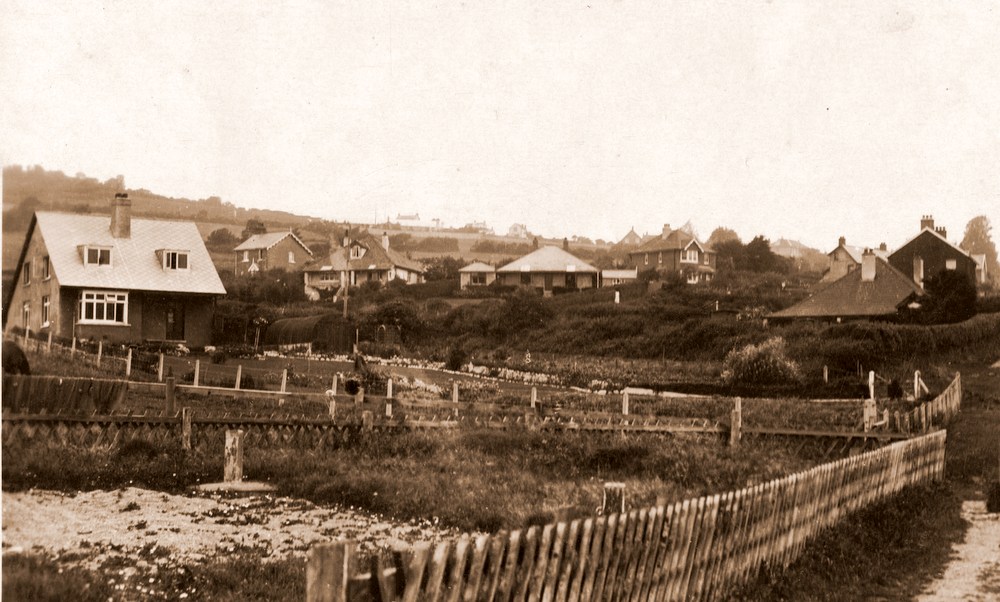
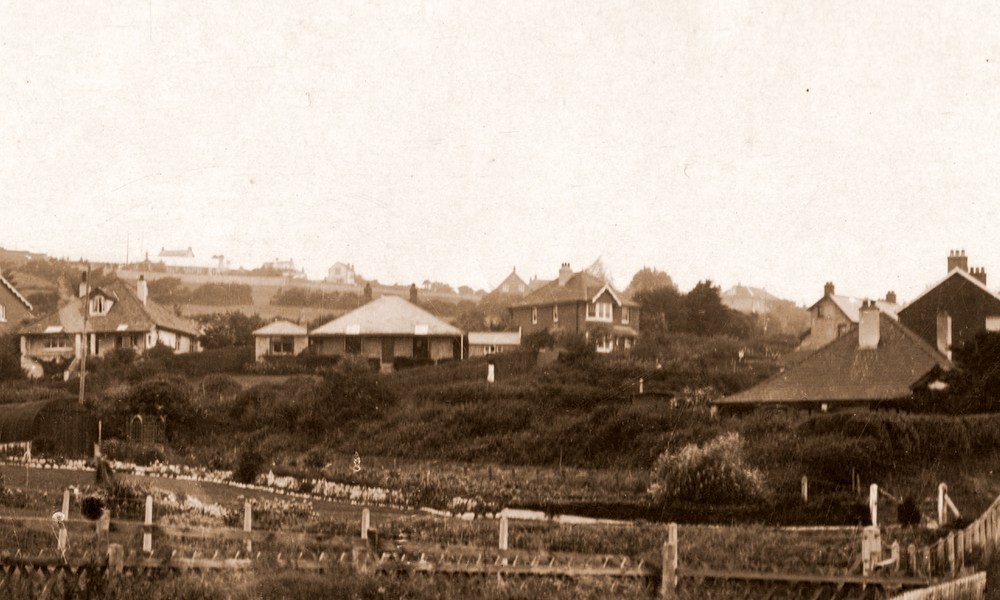
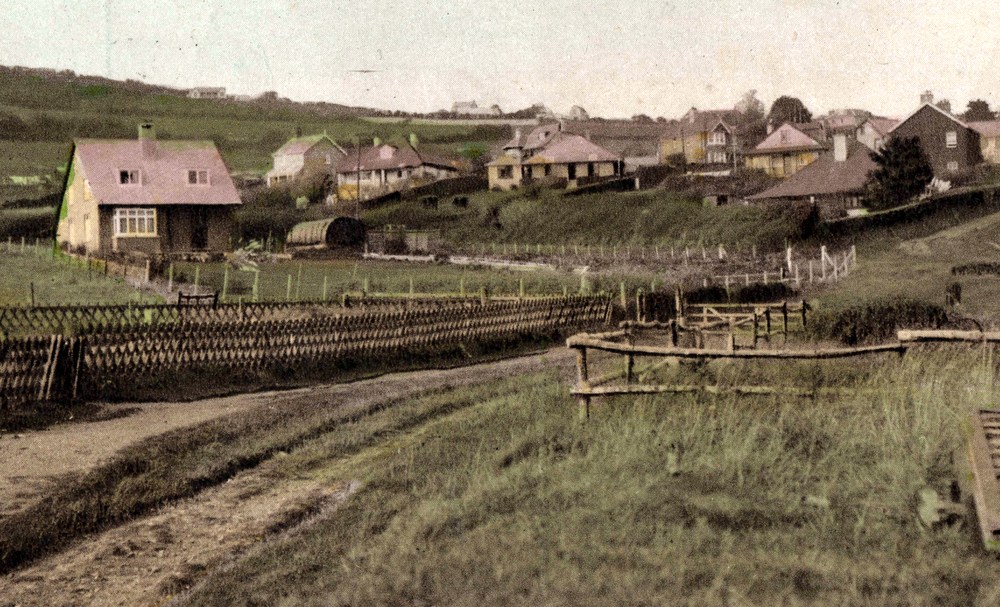
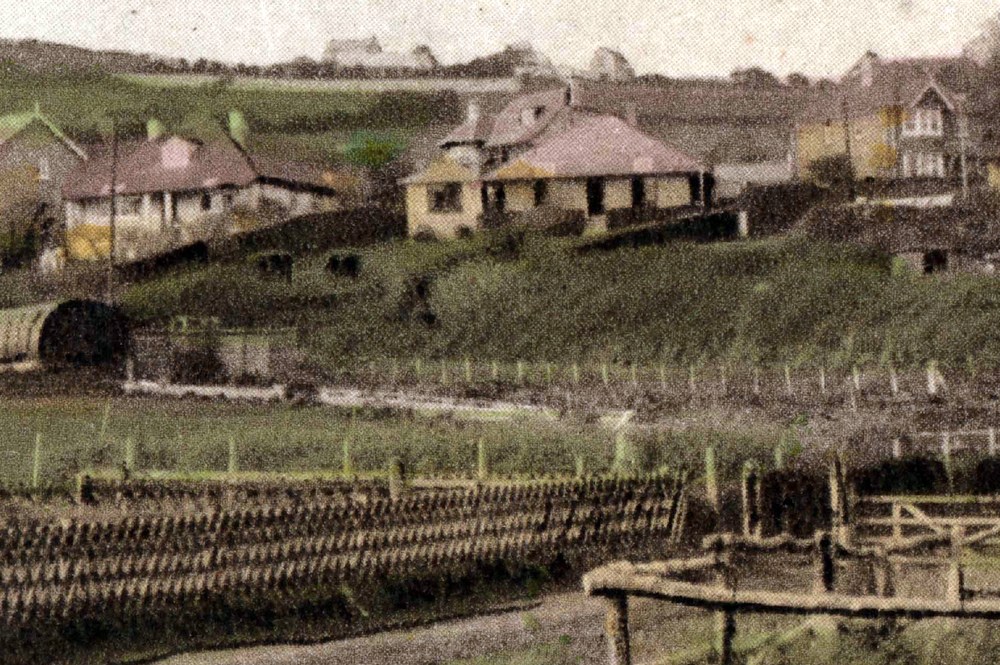
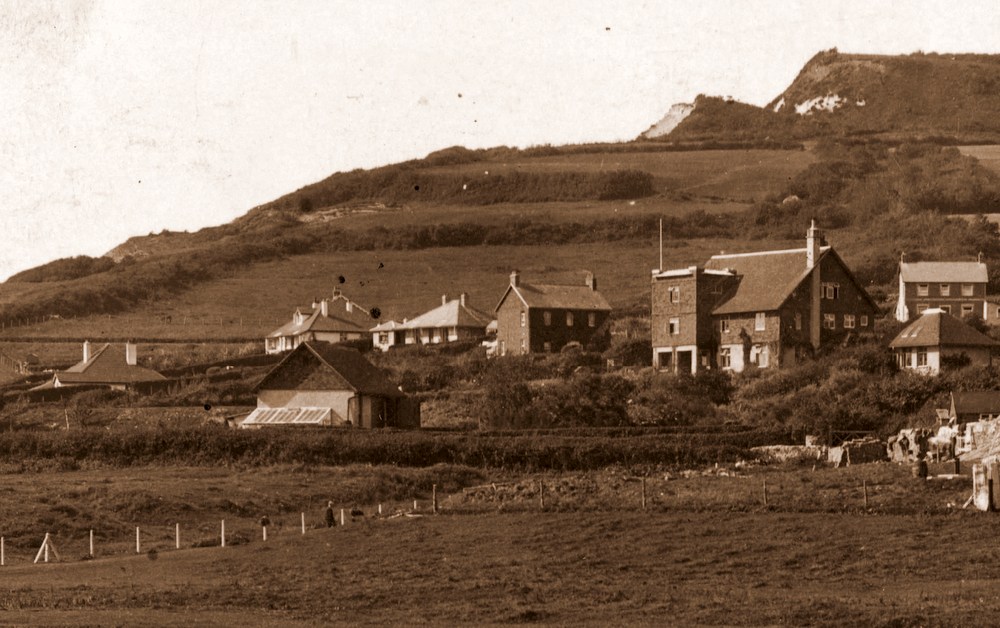
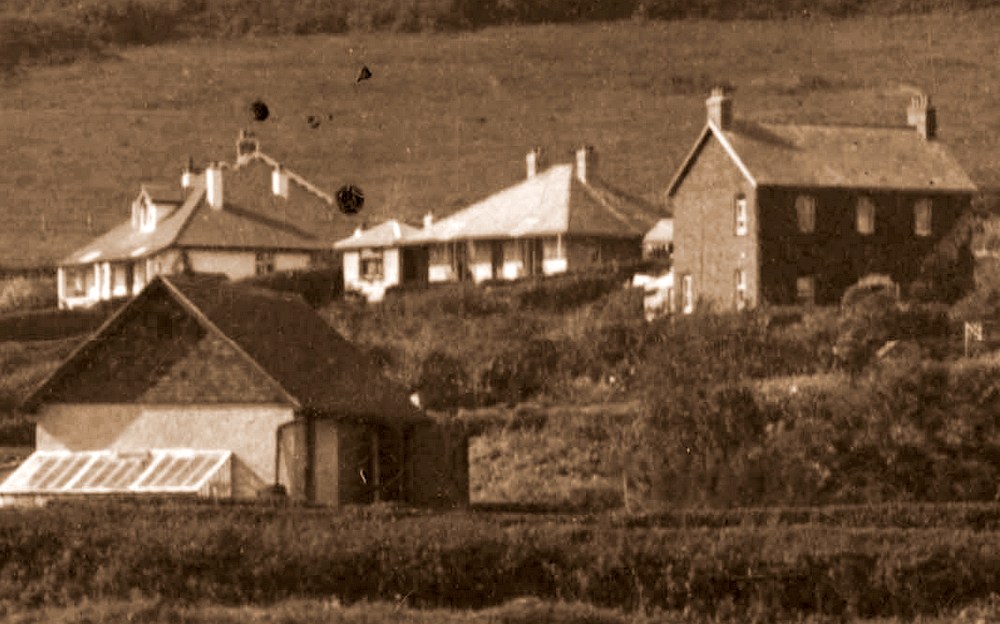
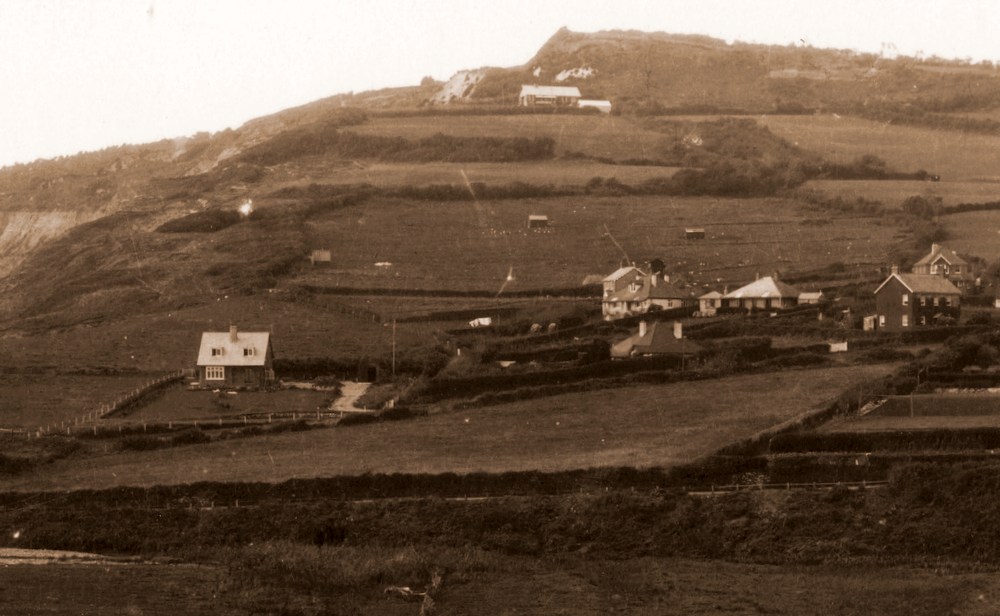
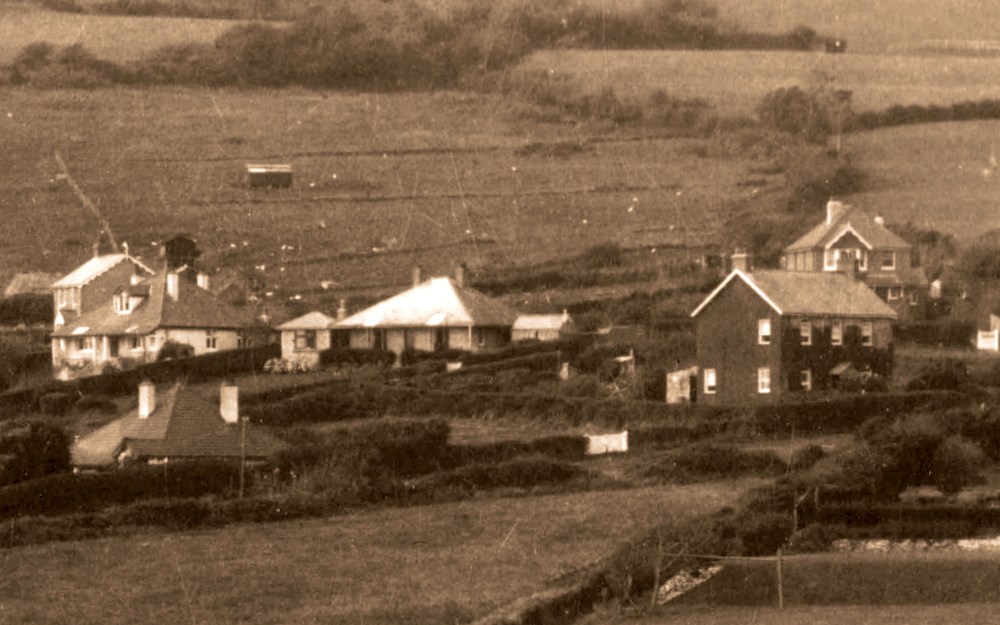
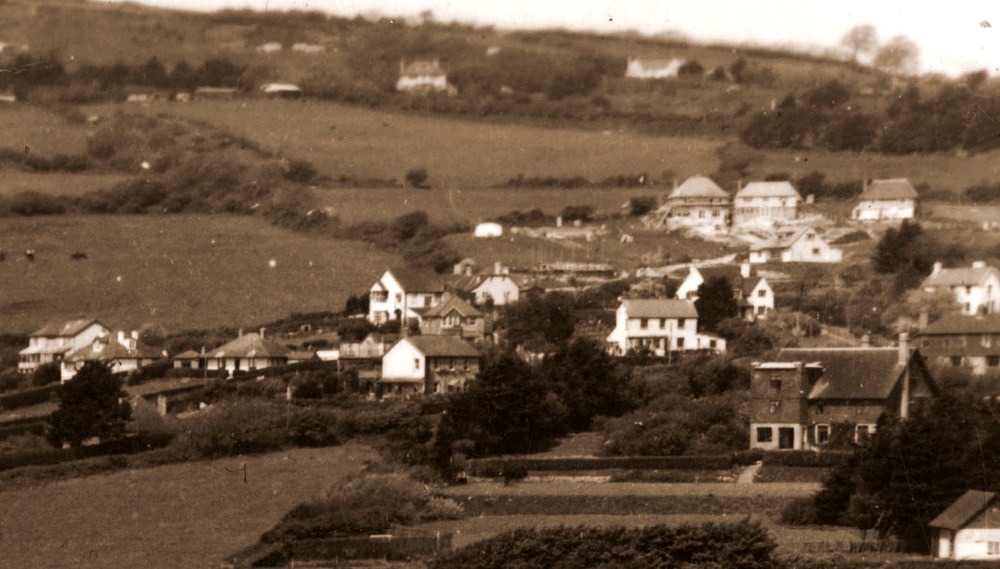


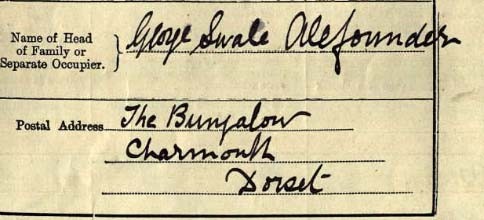
Son of Robert Swale Alefounder above. Lived in Tanners' Lane, Ipswich, where he suffered a break-in [Ipswich Journal, 30 January, 1869]:
Housebreaking and Extensive Robbery.—The house occupied by Mr. Alefounder, situated in Tanners' Lane, was broken into on Sunday afternoon last, whilst the family were at Church. An entrance was effected by the kitchen window, and, from what subsequently took place, by some person or persons who had some knowledge of the premises. Mr. Alefounder had a large sum of money in the house at the time, a number of tenants having paid their rents during the previous week; and this money was kept in a cash-box placed in a small closet. The thieves forced the door of this closet open, and next the cash-box, taking all the money, which amounted to a large sum, including two or three notes, the numbers of which are, fortunately, known. Information was at once given to the police, but we regret to say the thief or thieves are not yet in custody.He was removed from the register of voters that year [Ipswich Journal, 16 October, 1869]:
The Revising Barrister (J. H. Mills, Esq.) sat in the Sessions Court of the New Town Hall, on Wednesday, for the purpose of revising the list of voters for the Borough of Ipswich. …He owned property bounded by the River Gipping, as is made clear by a report in the Ipswich Journal 24 March 1877, concerning an enquiry into proposed compulsory purchase of land for sewerage works:
Mr. George Swale Alefounder (St. Peter's parish), was objected to on the ground that he did not occupy either as owner or as tenant, and, secondly, that he was not of age, and the vote was struck off. …
Mr. G. R. Mills said he objected on behalf of Mr. Alefounder, the owner of a considerable frontage on the Gipping, which formed a natural boundary to his property. If it were filled up some fence would be necessary, and he asked for a five feet wall. … The Inspector said [the matter] hardly came within his province …He also owned property on Harvey Street, an adjoining freehold building site being offered for sale in 1879. Property in Southwold that he inherited from his father was the subject of a report in the Ipswich Journal of 6 June 1882:
Negociations are now pending with reference to the acquisition of a portion of the late Mr. Alefounder's property, and should the schemes which have been brought forward be carried out great improvements will be effected. We hear that application has been made to the Corporation to erect a Coastguard watch-house on this site, in the place of the existing one: but this is, of course, dependent upon the scheme of making a broad roadway fronting the sea, on the Corporation property and the late Mr. Alefounder's land.The negociations were successful. Later that year, 23 December and repeated in the two following weeks, a notice appeared in the Ipswich Journal to the effect that, unless objections were made, an exchange of land under the Inclosure Acts would take place. George Swale Alefounder would lose a strip of land formerly part of North Field, &c, of 1 acre 20 poles, and would gain part of land known as "South Went" (8 poles) plus part of Went Ward Piece (3 rods 7 poles).
The Order of Exchange, dated 3rd May 1883, is in TNA ref. MAF 11/159. The sketch map on the right shows the land to be exchanged. George Swale Alefounder lost the land marked in red, which then formed the present Marlborough Road, part of Pier Avenue and the aforementioned "broad roadway fronting the sea" and gained the bits marked in green: a small triangular area between Marlborough Road and North Parade (part of South Went) and an area now between Pier Avenue and Hotson Road (part of West Ward, not "Went Ward" as stated in the Ipswich Journal). According to the Order, he was at this time a resident of Kemp Town, Brighton, Sussex.
In 1884, a dispute arose as to compensation to tenants for loss of crops when some of Mr. Alefounder's land was used for a new road to the north of Southwold. The Town Council asked Mr. Alefounder to pay the money. He replied that "he had not agreed to recoup the tenants for the loss of their crops. He understood that the road would not be made until the crops were off the land. The making of the road rested with the Corporation, and time was not specified." Somewhat under protest from some councillors, it was agreed that the Council should compensate the tenants for loss of crops and their rent.
According to Skinner, a certain G.S. Alefounder was a director of Kangarilla Silver Mines Limited. It appears that this was a London-based company with mining interests near Adelaide, Australia. Skinner does not make clear whether it was this G.S. Alefounder or his son that was the director. However, the Financial Times, 21 June 1894, reported how "Mr. Alefounder" came to be appointed as a director, and as the younger G.S. Alefounder was then only 15, this must refer to the elder George Swale Alefounder.
Kangarilla Silver Mines, Limited, had authorised the issue of 12000 new shares, but the issue had not been fully subscribed. In particular, Mr. Alefounder, the largest shareholder, had not taken up his allotment. Mr. Davis persuaded him to do so, but he only agreed on the basis that he would become a director. The existing directors all resigned, and a new Board, consisting of Mr. Davis, Mr. Alefounder, Mr. D. Church, and Mr. Alvey, was appointed.
